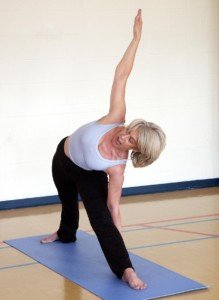
There are simple ways that you can lengthen your lifespan after suffering from a transient ischemic attack (TIA).
A TIA is linked to a shorter life span, but specific steps will increase one’s life span.
Research says that a mini stroke (aka TIA or transient ischemic attack) can shorten a person’s life span – by up to 20 percent over a nine-year period.
A TIA in and of itself does not shorten life span.
Rather, it is an indicator or marker of things about the patient that can shorten life span.
You can’t die from a TIA (but you can die from a stroke). However, a TIA means a high risk of stroke and increased risk of future issues that may reduce life expectancy, says the paper which appears in the journal Stroke: Journal of the American Heart Association.
Dr. Melina Gattellari’s study recommends that doctors very closely help TIA patients manage their lifestyle for many years after the mini stroke.
- Quit smoking.
- Lose excess weight.
- Eat fewer processed foods and more fruits, vegetables and nuts.
- Exercise

And therein lies the problem, because only one of these recommendations is straightforward and not open to misinterpretation: that of quitting smoking: You either smoke or you don’t.
But just what does “exercise daily” mean?
Many people, including those who have suffered a transient ischemic attack, believe they “exercise daily” or get “plenty of exercise.”
You do not have a built-in, ready-made exercise program just because you clean the kitchen every day, shop three times a week, vacuum once a week, walk your dog or use your staircase strictly for transportation eight times a day.
You’ve ALREADY been doing these things. Post-TIA, you need to bump things up a notch.

Freepik.com/pressfoto
“After a TIA, and after controlling blood pressure and any other medical risk factors to prevent further TIAs, exercise is definitely important,” says Danielle DonDiego, DO, a family physician and obesity specialist with SteadyMD, an online program where patients can call, text or video chat with their doctor anytime.
“Exercise can keep blood pressure lower and help with circulation.”
Exercise should not be incidental; it should be “dedicated,” says Dr. DonDiego.
“As far as what type, in my opinion it’s whatever the person enjoys doing and will do, and progresses from there. I’m a big fan of resistance training for overall disease prevention and longevity.”
“Regular exercise” is that which does not include the movement of daily living that you were already doing prior to the TIA.
For example, the walking you do while shopping — slow, leisurely, laden with pauses — cannot be equated with a brisk, non-interrupted, arm-pumping walk at a park, track or residential area.
High blood pressure is a risk factor for mini stroke. Aerobic exercise, strength training and yoga will lower resting or baseline blood pressure.

The TIA patient needs to work out hard enough to produce a training effect.
Going through the motions is not enough.
“Regular exercise” means making the effort challenging — outside your comfort zone, yet not straining or painful in any way.

Shutterstock/Liderina
What You Eat
If you’ve had a mini stroke and believe you eat healthy, read the ingredients of your foods.
Avoid anything that says “hydrogenated” in the ingredients, regardless of what the front of the package says!
The FDA allows food companies to get away with labeling the front package with “Zero Trans Fats,” even though the product contains trans fats (disguised by the terms “hydrogenated” or “shortening”).
Learn the names of synthetic food additives, then stop eating products containing them, along with foods containing artificial flavors, dyes and added sugars.
It’s difficult to avoid added sugars (they are ubiquitous), but it’s easier than you think to avoid foods with synthetic chemicals and trans fats.
Healthy eating means focusing mostly on plant-derived foods with minimal processing.
Dismal Study Result
At the conclusion (nine-year mark) of Dr. Gattellari’s study, the survival rate of TIA patients came to 20 percent lower than expected.
The risks faced by one who had a TIA go well beyond the early stroke risk.
So many people who had a transient ischemic attack lose weight, stick to better eating and take up exercise in the few months following the event — only to begin letting their guard down after several months.
And then they’re back to their pre-TIA routine. They are playing Russian roulette.

 Dr. DonDiego
Dr. DonDiego







































